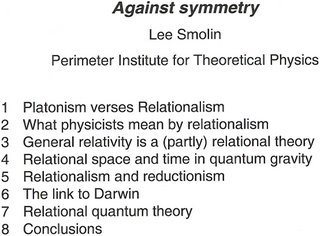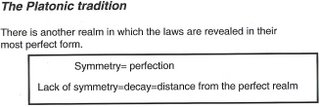We are "shadows" of the Sun's creations.
Sometimes it good to go back to "the beginning" so that one can see the context of what exists in reality, has a much "greater story to tell" then what we of the real world live under.
Those of science, have been focused in their own worlds. We just had to understand why they were so absorbed.
"String theory and other possibilities can distort the relative numbers of 'down' and 'up' neutrinos," said Jonathan Feng, associate professor in the Department of Physics and Astronomy at UC Irvine. "For example, extra dimensions may cause neutrinos to create microscopic black holes, which instantly evaporate and create spectacular showers of particles in the Earth's atmosphere and in the Antarctic ice cap. This increases the number of 'down' neutrinos detected. At the same time, the creation of black holes causes 'up' neutrinos to be caught in the Earth's crust, reducing the number of 'up' neutrinos. The relative 'up' and 'down' rates provide evidence for distortions in neutrino properties that are predicted by new theories."
Who is to know of what is sent to earth, and not understand, that what happens above us, also happens within the LHC?
Jacque Distler:
Travis Stewart reports that the LHC’s ATLAS detector has seen cosmic ray events, an excellent sign that things are working as they should.
One does not have to think, or be insulted by "such stories" that have captured minds in our history. The "ideas of cultures" are pervaded by such religious practises and context, by the fascination of some greater being? Having worked with them long enough?
As a scientist, you know your place in the world. Yet, you dream of such "fantastical stories." About things travelling through the little towns in Europe, as if, seeing the "Overlords of Science." Like some futuristic God making it's way through the town of some primitive era on earth. "Shocked people" looking from windows, as this enormous object in the "war of the worlds," has finally come upon us.
The article traces in non-technical language the historical development of our understanding of nuclear fusion reactions as the source of stellar energy, beginning with the controversy over the age of the sun and earth between Darwin and Kelvin, and including the discovery of radioactivity, the experimental demonstration that four hydrogen nuclei are heavier than a helium nucleus, and the theoretical insights provided by Einstein, Gamow, and Bethe. The concluding sections concern solar neutrino experiments that were designed to test the theory of stellar evolution and which, in the process, apparently revealed new aspects of microscopic physics.
It is important that one understands that such a thing having been studied by our scientists, is still a "noble thing." Where we learn to understand what these things could represent symbolically? Enlightenment possibly? When all the understanding of the "Neutrino overlords" are understood in their place and time.
The winged sun was an ancient (3rd millennium BC) symbol of Horus, later identified with Ra.
A solar deity is a god or goddess who represents the sun, or an aspect of it. People have worshipped the sun and solar deities for all of recorded history; sun worship is also known as heliolatry. Hence, many beliefs and legends have been formed around this worship, most notably the various myths containing the "missing sun" motif from around the world. Although many sources contend that solar deities are generally male, and the brother, father, husband and/or enemy of the lunar deity (usually female), this is not cross-culturally upheld, as sun goddesses are found on every continent. Some mythologists, such as Brian Branston, therefore contend that sun goddesses are more common worldwide than their male counterparts. They also claim that the belief that solar deities are primarily male is linked to the fact that a few better known mythologies (such as those of ancient Greece and Egypt) sometimes break from this rule. The dualism of sun/male/light and moon/female/darkness is found in many (but not all) European traditions that derive from Orphic and Gnostic philosophies, with a notable exception being Germanic mythology, where the Sun is female and the Moon is male.
Sun worship is a possible origin of henotheism and ultimately monotheism. In ancient Egypt's Eighteenth Dynasty, Akhenaten's heretical Atenism used the old Aten solar deity as a symbol of a single god. The neolithic concept of a solar barge, the sun as traversing the sky in a boat, is found in ancient Egypt, with Ra and Horus. Proto-Indo-European religion has a solar chariot, the sun as traversing the sky in a chariot. At Roman Empire, a festival of the birth of the Unconquered Sun (or Dies Natalis Solis Invicti) was celebrated when the duration of daylight first begins to increase after the winter solstice, — the "rebirth" of the sun. In Germanic mythology this is Sol, in Vedic Surya and in Greek Helios and (sometimes) Apollo. Mesopotamian Shamash plays an important role during the Bronze Age, and "my Sun" is eventually used as an address to royalty. Similarly, South American cultures have emphatic Sun worship, see Inti. See also Sol Invictus.





